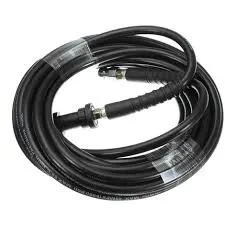compression pipe coupling
Understanding Compression Pipe Couplings A Comprehensive Overview
In the world of plumbing and pipefitting, ensuring secure, leak-free connections is essential for the efficient functioning of water and gas systems. One of the most effective solutions for achieving this is through the use of compression pipe couplings. These fittings play a vital role in connecting two pieces of pipe, allowing for quick assembly and disassembly while maintaining a tight seal. This article delves into the design, applications, benefits, and installation procedures of compression pipe couplings.
Design and Functionality
Compression pipe couplings are designed to join two lengths of pipe together without the need for welding or soldering. Typically made from materials such as brass, copper, or plastic, these couplings consist of several components a body, a compression ring (or ferrule), and a nut. The coupling is fastened onto the pipes by tightening the nut, which compresses the ferrule against the pipe surface, effectively creating a watertight seal. The design is such that it accommodates slight variations in the pipe’s diameter, making it a versatile choice for different pipe types.
Applications
Compression pipe couplings are widely used in various plumbing applications, including residential, commercial, and industrial settings. In residential plumbing, they are commonly utilized for connecting PEX (cross-linked polyethylene), copper, and PVC pipes. They are especially valuable in areas where space is limited, as their design allows for a snug fit without requiring extensive pipe preparation. In industrial contexts, these couplings can be found in systems involving water, gas, and other fluids, ensuring reliable operation over extended periods.
Benefits
compression pipe coupling

The advantages of using compression pipe couplings are numerous
. Firstly, they provide a quick and straightforward installation process, making them ideal for both professionals and DIY enthusiasts. Unlike soldered or welded joints, which typically require heating and cooling periods, compression fittings can be assembled with minimal tools (often just a wrench) and without the need for a flame.Moreover, compression couplings are highly versatile. They can easily accommodate different pipe materials and sizes, allowing for greater flexibility in plumbing designs. The ability to disassemble and reassemble these fittings without damaging the pipes is another significant benefit, making repairs and modifications more manageable.
Additionally, compression fittings are generally resistant to corrosion, ensuring longevity and reliability in various environmental conditions. This resistance is particularly crucial in plumbing systems that may come into contact with harsh chemicals or fluctuating temperatures.
Installation Procedure
Installing a compression pipe coupling is a relatively straightforward task. First, ensure that the pipe ends are cut square and free of burrs. Slide the compression nut onto one of the pipes, followed by the compression ring. Insert the pipe into the coupling and push it all the way in. Finally, tighten the compression nut onto the coupling by hand, then use a wrench to secure it further. It’s essential to avoid over-tightening, as this can damage the components and lead to leaks.
Conclusion
In conclusion, compression pipe couplings are an essential component in modern plumbing systems. Their ease of use, versatility, and reliability make them a preferred choice for various applications. Whether you are a seasoned plumber or a homeowner embarking on a DIY project, understanding how to use compression fittings effectively can enhance your plumbing solutions, ensuring a leak-free and efficient system.
-
Ultimate Spiral Protection for Hoses & CablesNewsJun.26,2025
-
The Ultimate Quick-Connect Solutions for Every NeedNewsJun.26,2025
-
SAE J1401 Brake Hose: Reliable Choice for Safe BrakingNewsJun.26,2025
-
Reliable J2064 A/C Hoses for Real-World Cooling NeedsNewsJun.26,2025
-
Heavy-Duty Sewer Jetting Hoses Built to LastNewsJun.26,2025
-
Fix Power Steering Tube Leaks Fast – Durable & Affordable SolutionNewsJun.26,2025

